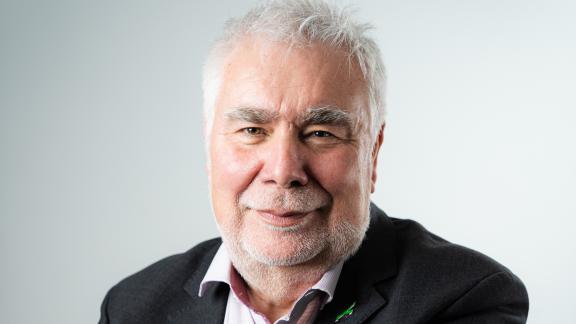Prioritising prevention policy in integrated care systems

Matthew Fagg, director of prevention at NHS England, and Hashum Mahmood, senior policy adviser in population health at the NHS Confederation, explain how integrated care systems (ICSs) provide an opportunity for local health and care leaders to develop cross-sector, collaborative aims and actions to progress preventative physical and mental health disease policy.
Non-COVID-19 excess mortality between November 2021 and November 2022 was primarily driven by cardiovascular disease (CVD) and diabetes, with almost 67,000 excess deaths in that time period. In terms of preventative treatments, 500,000 fewer people were treated for hypertension during the pandemic.
In response, the NHS has made unprecedented efforts to restore services within primary care on a steady trajectory of recovery. In the 12 months to January 2023, 1.6 million people submitted blood pressure readings from home. A new blood pressure service launched within community pharmacy undertook over 750,000 checks in the 12 months to December 2022.
…the NHS has sizable opportunity to prevent avoidable deaths and to reduce CVD healthcare demand
The evidence that secondary prevention can reduce disease morbidity and mortality is some of the most compelling in medicine. Interventions such as risk-based advice, prescription of appropriate antihypertensive agents, or obesity reduction programmes can have a profound impact. With over 1.5 million patient contacts every day, world-leading public health data provided through primary and secondary IT systems, and a workforce of around 1.3 million people, the NHS has sizable opportunity to prevent avoidable deaths and to reduce CVD healthcare demand. But to achieve this we must ensure that prevention is fully embedded within ICS plans and delivered through integrated neighbourhood teams.
Calls for action to deliver whole-systems prevention
A recent survey by the National Audit Office found over three quarters of ICS senior staff want to invest in prevention, although concerns about capacity to do so were flagged in some areas. To turbo-charge secondary prevention in local systems, we need cross-sectoral collaborative action to restore and develop interprofessional and integrated preventative services.
We believe there are three clarion calls:
1. Prioritise and optimise prevention
- Ensure when people contact all parts of the health and care system that they get effective risk assessment, advice, management or referral from routine / non-routine appointments across multiple disciplines within primary, secondary and community services.
- The use of data-led approaches to stratify and optimise treatment of patients with CVD can reduce pressure on general practice and major CVD events, such as stroke and heart failure.
2. Engage communities
- Prioritise prevention with targeted efforts of risk prediction, assessment and prevention towards population groups that may be disproportionately impacted by long-term conditions and socioeconomic deprivation.
- Closer collaboration between NHS, local government, and volunteer, community and social enterprise organisations can reach seldom-heard communities to help tackle amenable risk factors through creating person-centred care management and support.
- Developing innovative and agile delivery models that combine multiple interventions where possible and are done in many settings using integrated data systems. e.g., patient reported diagnostic measurements to health professional whilst at home, work or other places as part of their daily lives.
3. System alignment and incentivised investment on prevention
- This will require local systems working with partners across different types of healthcare provision to jointly develop shared prevention plans to assess and treat ill health.
- Prevention services need to be planned and delivered through a whole-systems approach and ensure that interventions are incentivised, well targeted and well evidenced, to have the greatest impact on reducing premature mortality and avoidable admissions.
What next?
Secondary prevention is key to sustainable solutions to the current health and care challenges and there is evidence we can shift the curve. More than a million people with non-diabetic hyperglycaemia have been referred to the NHS Diabetes Prevention Programme since 2016 and an independent evaluation shows a 7 per cent reduction in population-level incidence in areas the programme was delivered between 2016 and 2018.
Through the ICS Network and others, the NHS Confederation and NHS England will be engaging with local system leaders to understand the conditions required to facilitate a supported environment for prevention. We will do this by:
- highlighting examples of innovation in prevention delivery through data-driven population health management insights
- collating views on utilising and aligning local levers to embed prevention in local systems
- engaging ICBs and integrated care partnerships to improve universal and targeted prevention programmes to develop co-created sustainable and effective models of prevention.
By rallying to the calls of prioritising, engaging and aligning investment on secondary disease prevention, local health and care system leaders will be able to enrich their local environments to meet local population health needs, allocate resources equitably and oversee short and long-term operational and financial challenges. The shift to a preventative model of healthcare can ease current pressures and allow the creation of innovative personalised preventative patient pathways within community settings.



